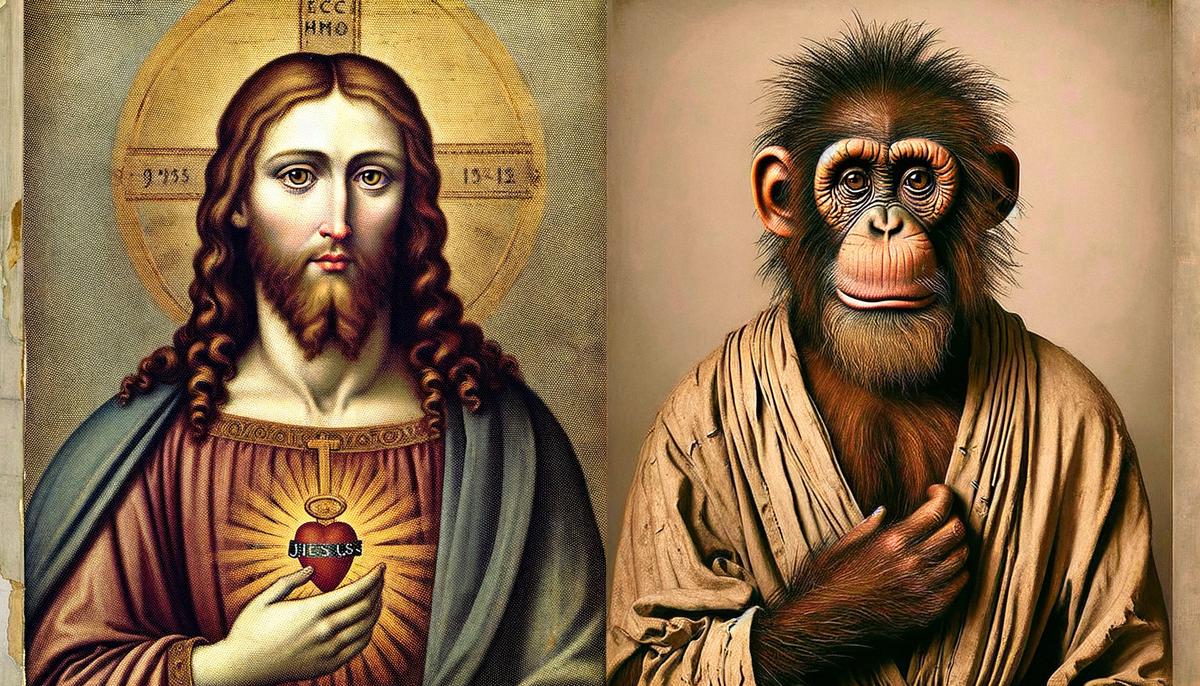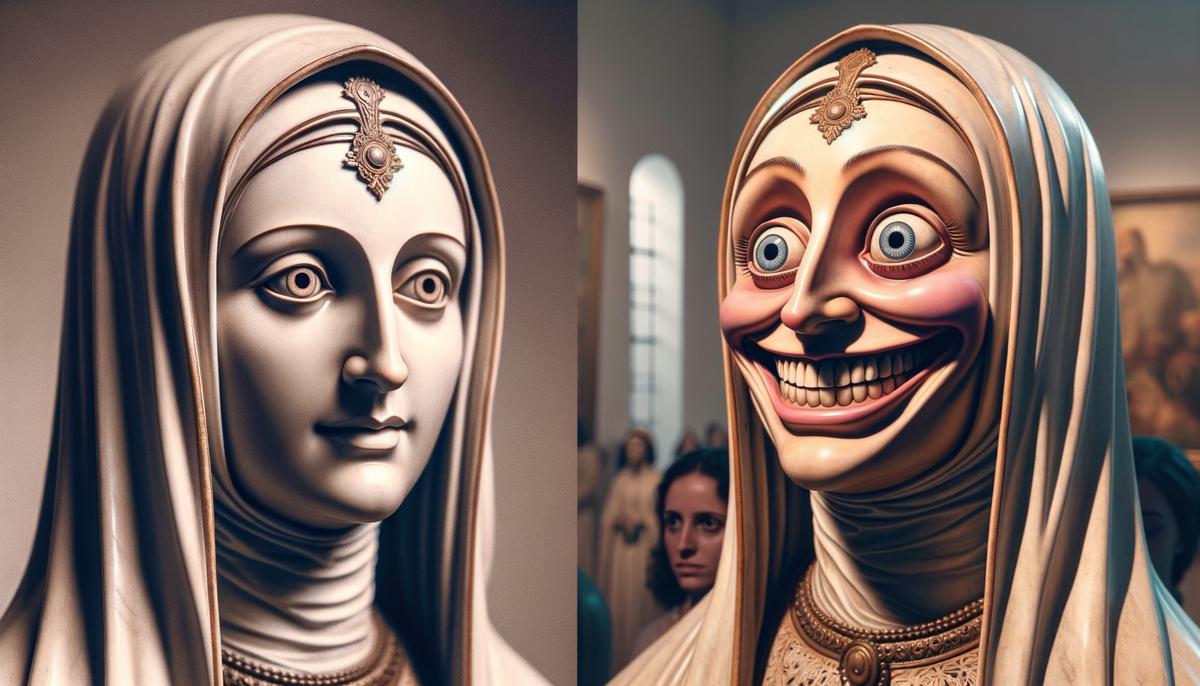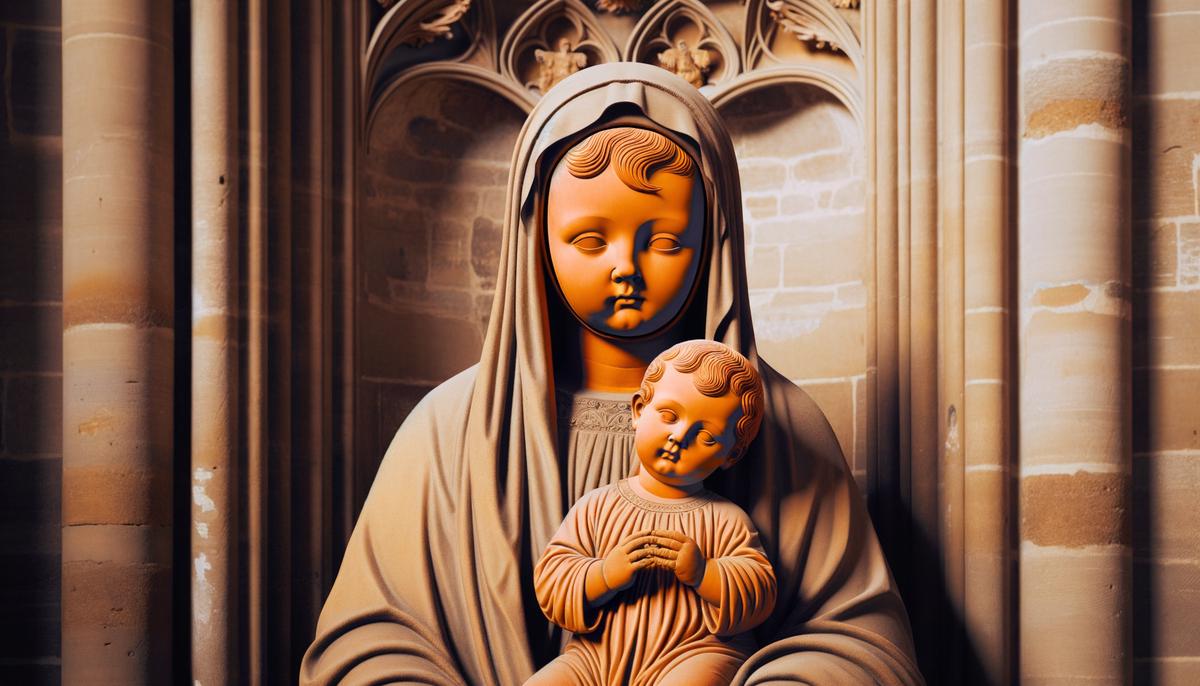Art restoration, balancing preservation and modernization, occasionally leads to intriguing outcomes that generate discussion across various communities. While the intention is to restore and protect valuable works of art, sometimes the results are quite different than expected, leading to both humorous and thought-provoking situations.
1. The Ecce Homo Fiasco
In Borja, Spain, a church's old fresco of Jesus was "fixed" by Cecilia Gimenez, an elderly parishioner. The result resembled a "crayon sketch of a very hairy monkey in an ill-fitting tunic."
Despite the odd appearance, Gimenez's touch-up turned the fresco into a global sensation, with tourists flocking to see the "Ecce Mono" (behold the monkey). The attention sparked debates about art restoration and parishioner initiative.
This unexpected icon of pop culture shows that sometimes errors lead to accidental success, breathing new life into forgotten corners and captivating audiences worldwide.

2. The St. George Misadventure
In Estella, Spain, a 16th-century statue of St. George was refurbished by a local artist. However, the result resembled a figure from a cubist canvas, with abstract geometry obscuring the saint's noble visage. The altered face and armory set social media abuzz, bringing unwanted fame to this quiet corner of Navarre.
Recognizing the restoration as a disfigurement, officials spent $34,000 for an 'unrestoration.' Experts worked to restore sanctity to the patron saint.
This fiasco reminds us that enthusiasm without expertise can render history unrecognizable. The true art lies in knowing when to pass the brush to more experienced hands, preserving authenticity over alteration.
3. Santa Bárbara's Unfortunate Makeover
In Brazil, a centuries-old Santa Bárbara statue underwent a modernist makeover, surprising onlookers. Originally sculpted with refined tranquility, the restoration aimed for innovation but landed in absurdity. The saint's features were redrawn with distorted eyes and an over-the-top smile.
Crowds gathered to gaze upon a face reincarnated through echoes of Picasso and Dali's whimsical periods. The comedy gleaned from the joyous saint was tinged with a realization about the delicate line between heritage and an individual's disruptive reinterpretation.
This misstep sparked conversations within the Brazilian art community about the need for careful stewardship when handling national relics. The journey from palette to pulpit can be profound, reminding us that historical fabric should be handled with informed hands and reverent hearts.

4. The Misguided Mosaics of Hatay
At Turkey's Hatay Archaeology Museum, attempts to preserve ancient mosaic masterpieces spiraled into a mishap. Mismatched restoration materials and traditional relics clashed, leading to destruction instead of preservation.
Public outcry echoed through social networks, spotlighting the critical lesson in curating yesteryear's artistry. The museum faced the task of unraveling these missteps, emphasizing the importance of employing adepts in art preservation.
The Hatay mosaics illustrate the need for reverence when heritage tangles with modern techniques. Our bridges to the past must remain intact, faithful to their original tellings. Every misplaced piece serves as a call to respect historical authenticity, embodying the art of precision that such relics warrant.
5. The Curious Case of a Misplaced Head
At Ste. Anne-des-Pins church in Sudbury, Canada, a statue of Mary and infant Jesus experienced an unexpected makeover. After vandalism left Mary headless, local artist Heather Wise attempted to salvage the duet with a makeshift terracotta head for Jesus.
Wise's interim solution—a bright orange head—turned into social media fodder, as viewers recoiled and chuckled at the sight of a religious icon turned colorful caricature. The head recalled a cartoon character's chic garb rather than biblical attire.
However, the terracotta head was no match for Canada's weather, dissolving beneath the rain. Redemption arrived when the original vandal had a change of heart, returning the authentic head to its rightful place. Restoration complete, normality restored!
This mix-up radiates unconventional charm and sage advice: while innovation stands noble, sometimes tradition offers the seamless fit necessary for cultural sanctity.

These tales of restoration gone awry highlight the importance of balancing innovation with respect for historical authenticity. This balance ensures that our cultural treasures continue to tell their stories as intended. Despite occasional missteps, the world of art restoration remains a fascinating realm where old meets new, and where even the most well-intentioned actions can lead to surprising and memorable results.
- Chutel L. Jesus fresco 'restoration' goes horribly wrong. Washington Post. August 22, 2012.
- Minder R. Despite Good Intentions, a Fresco in Spain Is Ruined. The New York Times. August 23, 2012.
- Jones J. Great art needs a few restoration disasters. The Guardian. June 22, 2020.
- Squires N. Elderly woman destroys 19th-century fresco with DIY restoration. The Telegraph. August 21, 2012.
- Klein C. Viral Botched Art Restoration Saved a Spanish Town in an Unexpected Way. History. January 15, 2021.





















